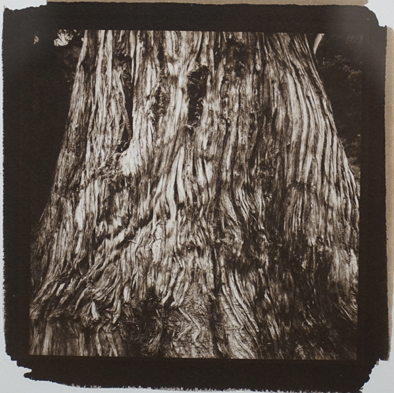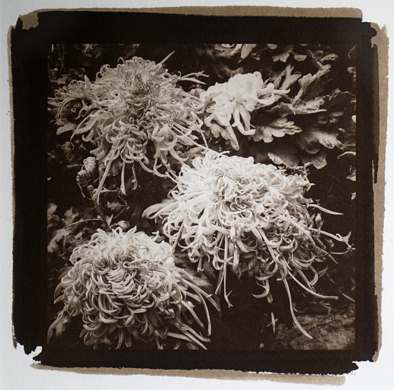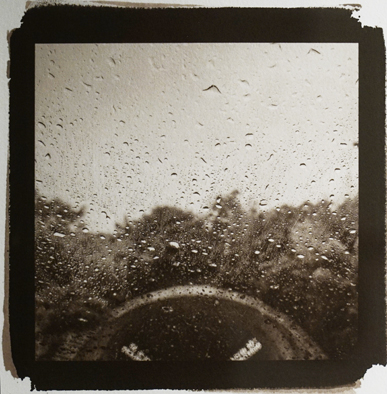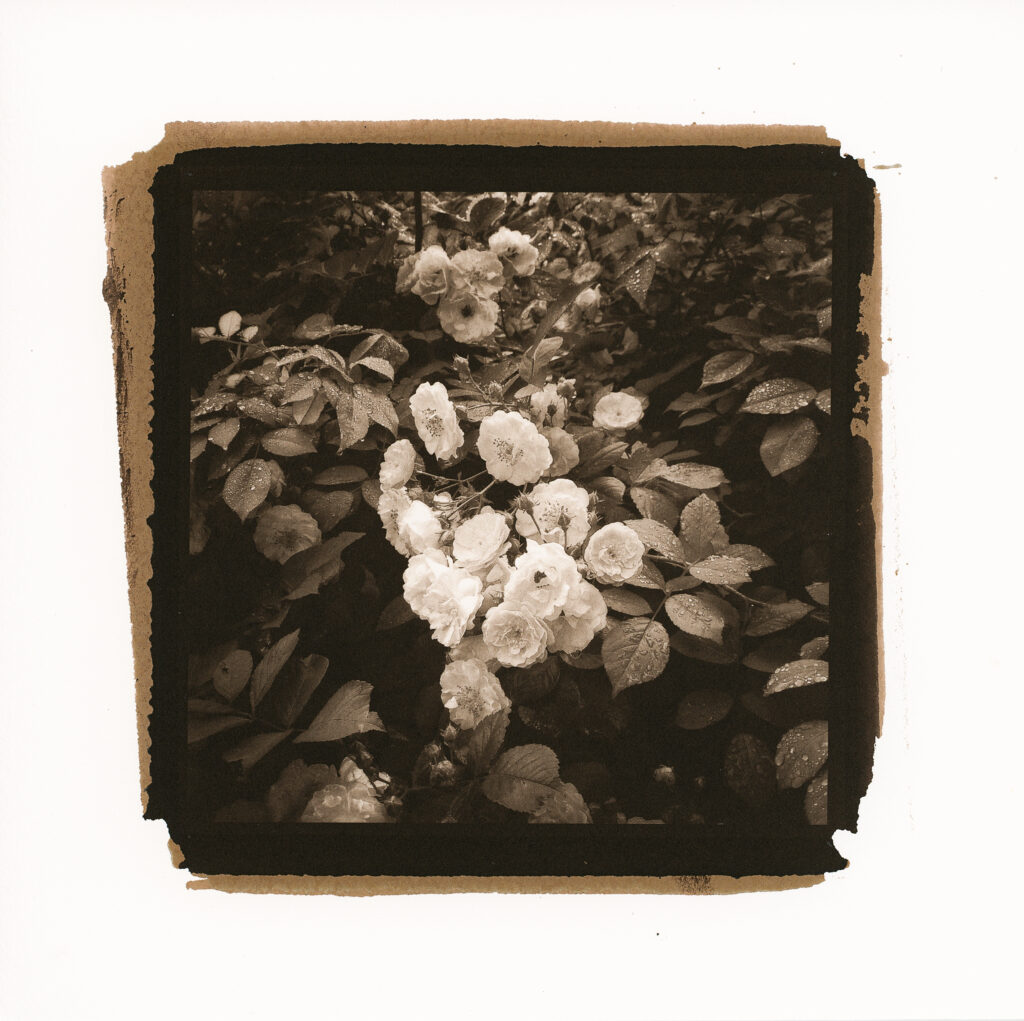
Flower 1 – Salt Print
Rain Hangzhou – Salt Print
Tree 1 Tibet – Salt Print
Chrysanthemum – Salt Print
About Salt Printing Salt printing refers to the positive printing procedure invented by William Henry Fox Talbot in 1834. Talbot’s fascination with science and art, as well as his frustration at his inability to sketch, led him to develop the first negative/positive photographic process. The work that he carried out between 1834 and 1850 established in principle and practice the foundation of silver halide photography; the basis of the process that is still used today.
Salt prints are created by placing the negative in contact with paper that has been coated in a solution of sodium chloride (common salt). The paper is dried and coated with a silver nitrate solution. After exposure to UV light the image is fixed, toned and washed for permanence. Salt prints have a matte surface, with the image actually embedded in the fibres of the paper. Their tones can range from reddish brown to chestnut brown.
About Kong Nai (Suzho China) Knong Nai is a Marketing Coordinator and Image Lab Specialist, University of Dayton China Institute. Nai’s passion and skill for the salted paper print and many other processes makes her stand apart in the world on the handcrafted photograph. As a curator of many exhibitions of the Handmade Photographs she is highly respected in this field, humble, passionate and skilled in this field of photography.
BACK TO GALLERY WALK THROUGH



